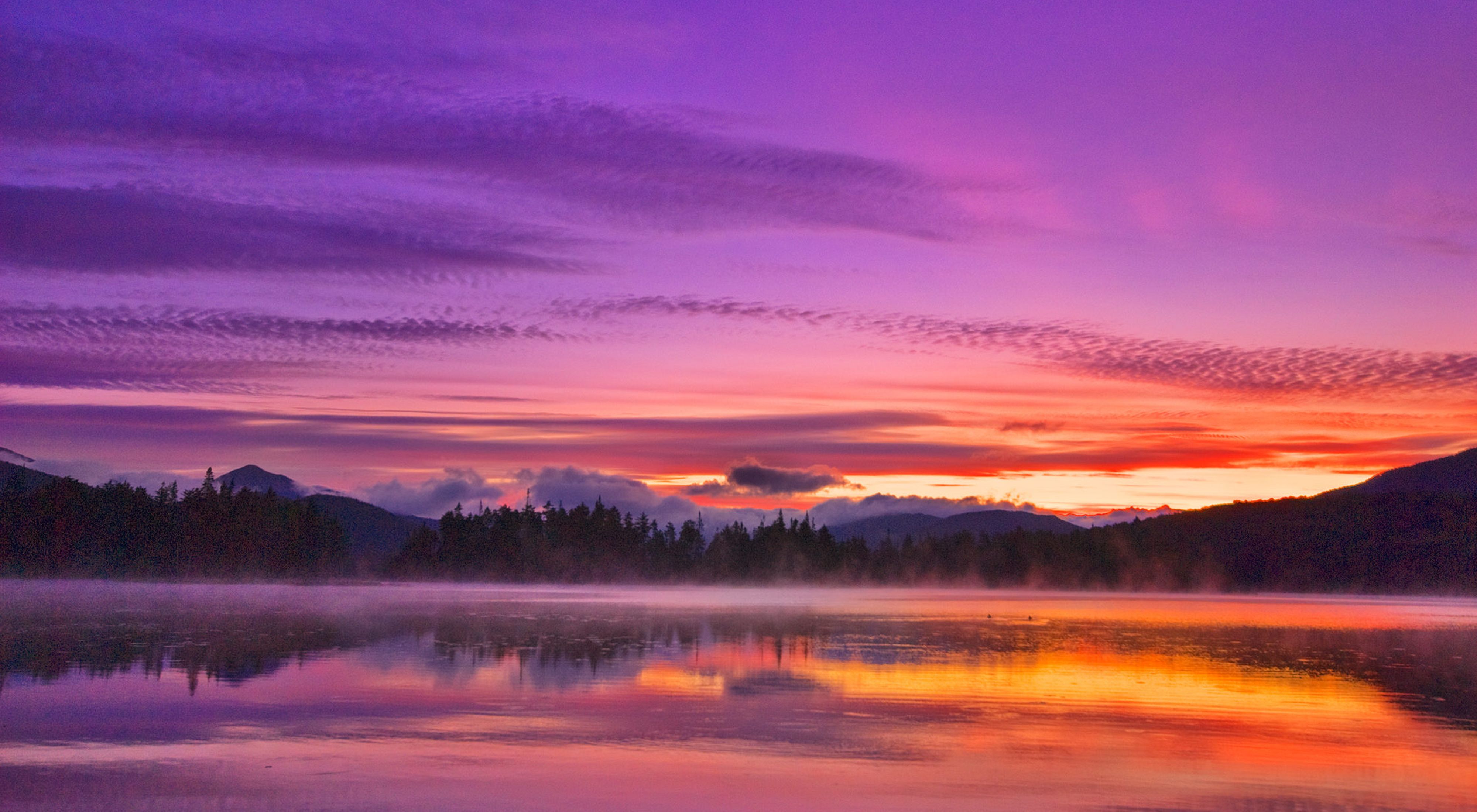When did this project start?
In 2007, a private equity firm purchased Finch, Pruyn & Co.’s manufacturing assets in Glens Falls; The Nature Conservancy purchased the company’s Adirondack forestlands—161,000 acres in all, featuring 415 miles of rivers and streams, 300 lakes and ponds, 90 mountain peaks and 16,000 acres of wetlands. The paper mill now operates under the name Finch Paper, and the Conservancy has steadily implemented a thoughtful conservation plan for the forests.
What does the plan look like?
The Nature Conservancy’s local Adirondack Chapter and New York State Department of Environmental Conservation, in consultation with a variety of interest groups and community leaders, agreed to conserve and protect these lands as follows:
- 95,000 acres protects for sustainable timber harvest
- 65,000 acres transferred to the state to become part of the Forest Preserve
- 1,100 acres set aside for community purposes in three towns
Where are these lands located?
The lands touch six counties and 27 towns in the Adirondacks, with more than 80% of the property in these five towns: North Hudson, Minerva, Newcomb, Indian Lake and Long Lake.
Have any stages of the plan been completed yet?
Yes. Follow the timeline below.
- December 2010 - 92,000 acres of commercial timberlands, now owned by a timber company, have been protected by a land preservation agreement called a conservation easement. The easement keeps the land in sustainable forestry, allows for continued recreational leasing, and secures some public access to places identified as important to local communities, including snowmobile connector trails in nearly a dozen towns.
- Spring 2012 - The towns of Newcomb and Long Lake purchased parcels from the Conservancy for community purposes, and 1,700 acres of lands re-acquired by Finch in 2010 are now protected by conservation easement.
- December 2012 - New York acquired from the Conservancy the 18,300-acre Chain Lakes-Hudson River parcel in the towns of Newcomb and Minerva.
- April 2013 - New York acquired from the Conservancy 9,885 acres, including the Indian River and OK Slip Falls-Blue Ledge tracts.
- Spring 2014 - the Conservancy transferred 15 parcels to New York State. These new public lands include a popular mountain biking area near Saratoga Springs, an exposed cliff in Indian Lake now featured in a new rock climbing guidebook, a large tract adjacent to the High Peaks Wilderness in Newcomb, as well as a mile-long stretch of the Hudson River with “Mouse Rock” a geographic feature that helps rafting guides gauge water levels.
- April 2015 – New York acquired from the Conservancy the 6,200-acre Macintyre East tract, featuring more than 5 miles of the Upper Hudson River and 7 miles of the Opalescent.
- April 2016 – New York acquired the 20,758-acre Boreas Ponds tract—the jewel in the crown.
Why protect these forests?
This project conserves forest lands and waters that are vital to our health and quality of life. Healthy forests act as natural filters providing clean air and water to breathe and drink. Protecting these forests helps to ensure that future generations can enjoy and reap the same benefits we do.
Who will benefit from this conservation effort?
This plan reflects a balanced and thoughtful approach that meets the needs of loggers, wildlife, local businesses, tens of thousands of local residents and millions of visitors seeking recreational opportunities.
Does the project bolster forestry-related jobs?
The carefully considered plan benefits loggers and other forest professionals by ensuring that more than half of the land will continue to be available for sustainable timber harvest operations.
Does the project bolster the recreation and tourism economy?
Yes. As properties transfer to New York State, they are becoming available to the public for the first time in more than a century. Local guides are offering trips to places like OK Slip Falls and innkeepers are advertising their lodging as a base camp for accessing new state lands. In addition to securing the land, the Conservancy provided $500,000 in grant funding to bolster the local recreation and tourism economy, which is among the Adirondack Park's most important economic sectors.
Can i visit these new state lands?
Yes. Check out this guidebook to the Finch Pruyn Lands.
What about the hunt clubs?
Minor portions of the lands transferring to NYS are currently leased by private hunt clubs. Though these clubs will have to relocate to other privately owned forests, the plan allows for a 10-year transition (2008-2018) and ensures members will still have these lands to hunt on through public access. Several years ago, the Conservancy offered an opportunity to relocate camps onto adjacent or nearby conservation easement lands to all of the clubs affected by the pending transfers.
